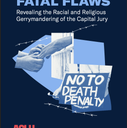
According to a recent article in the Wall Street Journal, some long-time supporters of the death penalty have recently shifted their positions, questioning whether the occasional execution is worth the costs incurred by taxpayers at a time when budgets are strained. Gil Garcetti (pictured), the former district attorney of Los Angeles County, which is responsible for roughly one-third of California’s 727 death-row inmates, recently remarked, “I was a supporter and believer in the death penalty, but I’ve begun to see that this system doesn’t work and it isn’t functional. It costs an obscene amount of money.” A study of the death penalty in California in 2011 showed that the cost of housing a death-row inmate was $100,000 per year more than the cost of housing someone sentenced to life without parole. The same study concluded that just picking a jury in death penalty cases costs $200,000 more than the amount for non-capital cases. In Montana, a group called Montana Conservatives Concerned about the Death Penalty has joined the movement to repeal capital punishment because of its cost. Steve Dogiakos, the group’s director, said, “The death penalty is another institution of government that is wasteful and ineffective.” In Utah, Republican State Rep. Stephen Handy recently asked for a fiscal review of how much the state is spending on capital cases: “I don’t have any illusion that either the Utah legislature or the people are ready to overturn the death penalty. But I want to start the dialogue,” he said.
(A. Jones, “Costs Test Backing for Death Penalty,” Wall Street Journal, October 5, 2012). See Costs and New Voices. Listen to DPIC’s podcast on Costs.



